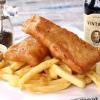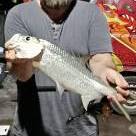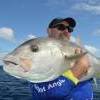-
Content Count
1,899 -
Joined
-
Last visited
-
Days Won
164
Reputation Activity
-
 yellow door 1 got a reaction from MIKECATTS in Sunline Siglon PEx8 - ADV
yellow door 1 got a reaction from MIKECATTS in Sunline Siglon PEx8 - ADV
Thanks for the tip Mike - if it can handle kings - it will handle anything👍
-
 yellow door 1 reacted to MIKECATTS in Sunline Siglon PEx8 - ADV
yellow door 1 reacted to MIKECATTS in Sunline Siglon PEx8 - ADV
I use the leader as well.. Lands 35 kilo kings no probs in 120lb.. Go straight to the kastking web site,, much cheaper than ebay..
I tried the cheap Jarvis walker braid.. Bit too stiff/rigid and doesnt hold up well to rocks etc.. Lost a couple of kings last year to it..
But the Jarvis walker Leader seems to work ok..
-
 yellow door 1 got a reaction from MIKECATTS in Sunline Siglon PEx8 - ADV
yellow door 1 got a reaction from MIKECATTS in Sunline Siglon PEx8 - ADV
Yeah all my lines are Kast King now - from braid to the Flourocote leaders.
I love a bargain - so I always look for the gems in the lower price Bracket - Kast king is one of those - Not as cheap as it used to be but I will continue to buy it if my bulk purchase ever runs out😉
-
 yellow door 1 reacted to projoe in Southern Garfish - Best Baits. Can You Match the Hatch?
yellow door 1 reacted to projoe in Southern Garfish - Best Baits. Can You Match the Hatch?
About 3 decades ago when i used bait to catch a few fish for a meal or 2 in my boat i would look out local for snapper, salmon, drummer or some fish with a drag pulling capacity. Once i had caught a couple of these species I would move on to the appetisers like gar, tommies, or even a couple of good sized leatheries.
Now for the garfish as i always had some pilchards left i would carefully fillet a couple of half frozen pillies & cut them in long slivers appox 40mm & about 5mm wide these would be carefully put on a size 8 longshank gamakatsu or diiachi hook with a half hitch holding the top of the bait & with a nice slow action 2kg rod & small spinning reel with 2kg line i would cast this unweighted morsel into the berley stream i had running out of the muncher on the back of the boat made of bread & a few pillies. If the garfish were a bit shy i would stoop to dipping the end of the bait in a tiny bit of tuna oil & would slowly very slowly retrieve the bait back this generally got them biting & the larger gar were bloody good fun on this gear. Flyfishing for the gar on trout 4 weight gear with a maggot fly of my own design worked a real treat retrieved in the same fashion as above but thats another story for later.
-
 yellow door 1 reacted to Rybak in Southern Garfish - Best Baits. Can You Match the Hatch?
yellow door 1 reacted to Rybak in Southern Garfish - Best Baits. Can You Match the Hatch?
"Slivers of Garfish
I've never tried this, but I've heard good reports of taking a few slivers off the first garfish you catch and using this as bait. This is suggested as a way to mix up your bait if the garfish are being timid".
Yep this works. Also dip into their green poop - with all baits. Slivers off pilchard woks great as well. The rubber gents also work. Also slivers off cockles & cheese. A touch of aniseed can stir them up.
Also when timid, no float. Just hook & bait at the back of boat drifting naturally with the current.
-
 yellow door 1 reacted to Wert in Southern Garfish - Best Baits. Can You Match the Hatch?
yellow door 1 reacted to Wert in Southern Garfish - Best Baits. Can You Match the Hatch?
Add in tiny bits of prawn, over the last year or so and after a reasonable amount of side by side comparison I've come to the conclusion that our gar in both gulfs probably prefer the prawn more than anything else, barely touch squid, okish on cockle flesh, certainly like gents but if I had to catch one to save my life 2 years ago I'd have said "I'll use gents thanks" but now it's prawn, which kind of makes sense given the previous post on diet since prawns are kind of giant versions of their natural, non salad based, diet.
-
 yellow door 1 reacted to MAH in Southern Garfish - Best Baits. Can You Match the Hatch?
yellow door 1 reacted to MAH in Southern Garfish - Best Baits. Can You Match the Hatch?
A common principle of fishing is to try and match the hatch, or in other words, use bait that is the same or similar to the target fish diet; but considering the primary dietary components of southern garfish are seagrasses of the family Zosteraceae and planktonic amphipods, it's not really possible.
Instead, generations of fishos have used substitute baits for southern garfish including;
maggots bread chicken slivers of garfish Which bait to use seems to be a personal preference (I stick with maggots and chicken).
Maggots
Maggots are probably the most common bait used for southern garfish. Apart from the "yuk" factor at the thought of maggots, they are a great bait to have on hand, they don't, smell, they last for months in the fridge and you get a tub of approx 350 maggots for $6-$8. When fishing maggots, they also stay on the hook well and it takes quite a few bites before you need to re-bait.
Bread
Cheap! Readily available. Can be used both as bait and soaked in water for burley. If you have non-fishing partner, they will not complain about bread in the house (as opposed to a tub of maggots). Downside to bread is you need to re-bait more regularly.
Chicken
It was an old timer on Largs Pier that taught me about chicken for garfish (he also fished off the bottom, not under a float). He used chicken breast, so I have always used chicken breast. Once you have bought the chicken, put into the freezer. When you want to go fishing take it out before, let it partially defrost, so it makes easier to cut even thin slices. I like to take these slices and pat dry with paper towel, to remove as much moisture as possible (the more moisture you remove, the firm it will be and it will stay on the hook better). Next, take the slices and cut them into small slithers ready for your hooks, then put in a container with some breadcrumbs (the breadcrumbs absorb more water and add to the burley trail when fishing). Sometimes I will put some tuna oil on the slithers before adding to breadcrumbs. This is a great bait to have on hand, it's cheap, readily available, you can keep it in the freezer and not yuk out anyone else in the house.
Slivers of Garfish
I've never tried this, but I've heard good reports of taking a few slivers off the first garfish you catch and using this as bait. This is suggested as a way to mix up your bait if the garfish are being timid.
-
 yellow door 1 reacted to MAH in Southern Garfish (Hyporhamphus Melanochir) - South Australian Fishing Limits
yellow door 1 reacted to MAH in Southern Garfish (Hyporhamphus Melanochir) - South Australian Fishing Limits
This will be a series of posts about Southern Garfish (Hyporhamphus Melanochir), starting with basic information on fishing limits. Other posts will cover feeding habits and different approaches to catching these mini marlins.
This information is accurate as of 13/04/2022, please check the PIRSA website for updates.
Minimum legal length: 23 cm measured from tip of the upper jaw to the tip of the tail. Personal daily bag limit: 30 Daily boat limit when 3 or more people are fishing on board: 90
-
 yellow door 1 got a reaction from doobie in LURE OBSESSIVE
yellow door 1 got a reaction from doobie in LURE OBSESSIVE
I recently had my first crack at surface redfin and noticed they would quickly wise up to a slow retrieve but would fire back up on one 3 times as fast.
At the same time they would happily hit my soft plastic on a slow retrieve just beneath the surface but didnt want to know about a slowly retrieved popper
Id love to hear your thoughts on retrieval speeds for Whiting on surface.
Here’s the lure I was using
-
 yellow door 1 got a reaction from doobie in LURE OBSESSIVE
yellow door 1 got a reaction from doobie in LURE OBSESSIVE
Heres and article on the "Timid" genes being passed on
https://activeanglingnz.com/2015/09/17/do-fish-learn-to-avoid-baits-lures/
-
 yellow door 1 got a reaction from HB tragic in LURE OBSESSIVE
yellow door 1 got a reaction from HB tragic in LURE OBSESSIVE
Awesome article mate - very informative👍
-
 yellow door 1 got a reaction from Des in LURE OBSESSIVE
yellow door 1 got a reaction from Des in LURE OBSESSIVE
Ahh interesting - thanks Mate
Yeah my version of a slow retrieve had heaps of pauses - I'll cut them out👍
The constant fast retrieve with no pauses definitely got way more attention
-
 yellow door 1 reacted to Des in LURE OBSESSIVE
yellow door 1 reacted to Des in LURE OBSESSIVE
I Have not tried for Redfin in a long long time. Not at all sure about their behaviour.
With YFW on a clear calm day a smaller lure, Clearer colours, and a slower retrieve works a little better.
On a windy day a bigger, noisier/splashy lure, with a faster retrieve works better.
Never pause your retrieve with YFW. A millisecond pause followed by a burst of speed can work.
-
 yellow door 1 got a reaction from Des in LURE OBSESSIVE
yellow door 1 got a reaction from Des in LURE OBSESSIVE
I recently had my first crack at surface redfin and noticed they would quickly wise up to a slow retrieve but would fire back up on one 3 times as fast.
At the same time they would happily hit my soft plastic on a slow retrieve just beneath the surface but didnt want to know about a slowly retrieved popper
Id love to hear your thoughts on retrieval speeds for Whiting on surface.
Here’s the lure I was using
-
 yellow door 1 got a reaction from Des in LURE OBSESSIVE
yellow door 1 got a reaction from Des in LURE OBSESSIVE
Heres and article on the "Timid" genes being passed on
https://activeanglingnz.com/2015/09/17/do-fish-learn-to-avoid-baits-lures/
-
 yellow door 1 reacted to Des in LURE OBSESSIVE
yellow door 1 reacted to Des in LURE OBSESSIVE
LURE OBSESSIVE
Okay! I am a little crazy about lure fishing Yellow Fin Whiting.
I need to have at least a couple, if not more, wading & casting sessions a week.
But the obsession does not stop when I am out of the water.
I have rarely, in recent years, fished a single lure straight out of the box.
Every lure needs to be tinkered with and modified.
I and a few others are starting to think, tinkering, modifications, and multiple lure options are starting to be a necessity to ensure ongoing success when lure fishing YFW.
There is some anecdotal evidence that fish learn and are conditioned by their experiences.
They will soon avoid those dangerous items (lures) that have caused distress and have taken away some of their school mates. Especially in the heavily fished locations.
Lure fishing may well cull all the risk taking aggressive fish. Or those with a higher metabolic rate. Leaving behind in the gene pool only the fish with the “timid cautious genes.”
You will continually have to change things up, present new options, to keep fooling them.
Little wonder there is always a new wave of super successful lure, shape, UV finish, Colour finish, material, etc, etc.
Well respected fishing writer and fishing product designer Steve Starling “Starlo” wrote back in March 2015, in the “Fishing Monthly Magazine” an article titled “Sticking it to Whiting on Top”
He wrote: “In the places where I fish, bigger whiting (which are quite old fish) have now seen a lot of poppers, and I find they can be rather suspicious of them. Stick baits are more subtle and sneaky and seem able to go on catching these more ‘educated’ whiting season after season.”
http://www.fishingmonthly.com.au/Articles/Display/17914-Sticking-it-to-whiting-on-top
We have seen the waning of the “Popper” lure’s effectiveness and the rise of “Stickbait” lures over the last 7 years.
Now how educated are those bigger older fish to Stick baits, after 7 years of experience? Will they avoid Stickbaits soon?
Blades and Vibes have since arrived on the YFW scene and they have been amazingly successful on YFW.
The Stick baits have now got bigger and bigger. And the bigger lures I find are proving to be more successful.
I recently got some Daiwa Slippery Dogs in their new larger 97cm size. For me, this has been Daiwa’s best lure yet for YFW.
How will lure designs for YFW progress? What are the adaptions we need to make to our lures?
How do we keep our offering new and fresh? We will always be trying to out smart these ever smarter YFW.
- A Variety used in these sessions.
Here is a run down of some lures types I use and some lure modifications I make .....
POPPERS
A floating lure. They have a big cupped mouth, which when retrieved makes a big splash. They are a “look at me! LOOK AT MOI !!!” noisy lure that I still find successful in choppier windy conditions. When your lure has to compete with the chop on the water to catch their attention. The fish are less visually discerning with their obscured view in these windy conditions.
These lures need to be worked, with a higher rod position and a constant retrieve to maintain a continuous bloop and splash.
I use Atomic Hardz, Shimano Bresnious Rise, Bassday Backfire, mainly.
STICKBAITS
Also floating lures, known for their “Walk the Dog Action” or Zig Zag Glide actions across the surface of the water. Dependent on the vigour of your retrieve. These are my most effective lures.
There are usually in a pencil like shape. They may be a more bellied shape on some. On retrieval they move in a zig zagging fashion across the water surface.
These lures are very easy to work. Especially if you have the right ultra light, sensitive tipped, fast action rod. It’s automatic!
Some, as is the case with the Sugapen and Daiwa Slippery Dog, have a very small cup face that provides a slight forward splash.
I use Bassday Sugapen mostly, but also Zipbaits Fakie Dogs, Daiwa Slippery Dogs, occasionally Fish Candy Skinny Dog and Berkley Scum Dog. A kennel of lures !!!!
- My Favourite Stickbait Sugapen95 Col# MB16
HYBRIDS
Again floating lures. Basically the longer Stickbait pencil body with a larger cupped popper mouth. They are very versatile in variety of conditions, but never seem dominant in any situation. Due to their larger cupped face they provide enough splash to be effective in choppy conditions as well as “Walk the Dog” in calmer conditions. On their day they can work when fish are turning up their nose at the Stickbaits. Again a very easy lure to work. I use Zipbaits Skinny Pop, MMD Splash Prawn, occasionally a Berkley Pop Dog
- Zipbaits Skinny Pop at work
SIZE MATTERS
As a general rule I find the bigger lures catch bigger fish. Especially in windier conditions. In very calm conditions I use smaller lures, like a Jackson Ebi Panic, Sugapen 70, or Berkley Pop Dog. I avoid calm conditions if I can help it. I much prefer the windier days with long down wind casts working over more water.
The larger Daiwa Slippery Dogs in the 97cm size, is proving to be Daiwa’s most successful YFW lure for me.
Zipbaits Skinny Pop 90 way out fish the smaller Skinny Pop Jr 70mm. Their Fakie Dog 70mm is also way better than the 50mm
I use the various sizes of the Sugapen to suit a variety of wind conditions. My favourite is the 95mm size as it suits the most frequent wind conditions in which I fish. The Sugapen70mm for glassy and light winds (0-5 knots). 95mm in moderate winds (5-15 knots). 120mm in stronger winds with heavy chop (15+ knots)
- A size range and suitable wind conditions.
BLADES and SUBSURFACE LURES
These don’t float! There are a few subsurface lures for YFW. Like StrikePro Blades, Zipbaits Zoea, but IMO none are better than the Ecogear ZX Blades. They flutter, vibrate and hop along the sand beds much in the way a Clicker or prawn would flee. They are so easy to work. Use a constant rolling retrieve. Feel the vibes of the lure. No vibes means there is some weed attached on it.
A hop or two adds excitement. A pause can often find a Flathead latching on.
They are made from metal and lead. Can cast long distances and into the wind easily. This is the lure I give to the lure fishing newbies. Their only drawback is bouncing along the bottom they can easily pick up weed. if you get a clear run they are very effective.
In deeper channels and cooler water conditions, when fish are too lethargic to come to the surface, these will see them out fish all the surface lures. Ecogear ZX, in the biggest 43mm size is my go too. TT and StrikePro blades, I have not given as much time in the water, but I have taken a couple of YFW and Flathead on them.
ASSIST HOOKS
Never use Trebles. I immediately remove all the trebles from a lure. They catch too much weed. And too many fingers as well.
The standard size trebles fitted on the lures are always an overkill for the small mouthed YFW anyway. If you want to retain the trebles you should downsize them. My favourite treble for this class of lure is the Daichi Death Trap #10.
Sharpness is a key factor for consistent hook ups. The fine gauge of the smaller assists provide penetrating needle sharpness.
On all the slightly larger lures it is possible to mount assist hooks both in the middle and on the rear.
The Ecogear ZX assist hooks, sitting in the middle of a stickbait lure I feel provides a good resemblance to a bunch of dangling prawn legs. The rubber “legs” dangling around your hooks also act as a weed guard deflecting weed off your hook. The YFW hit these middle assists with surprising frequency. I think aiming to disable their prey prior to feeding. My preferred size is the “Small” size Ecogear ZX Assist. There is now an increasing number of options available. Some of the better ones I have tried are Oceans Legacy and Shinto.
On the rear mount of the lure I most often use the Atomic Trick Bitz in size 8 attached with a few extra split rings.
There are less lures “thrown” by the fish when using assists. The flexible joint/connection with multiple split rings, does not provide the fish any leverage, to throw the hook. On Blades try a double set of assists. A combination of Trick Bitz and ZX, on blades and vibes ensure you get an inescapable, multi hook - hook up.
- Extra Assist hooks added to the Ecogear ZX43 blades
- A Few Assist hook options and placement on lures.
SPLIT RINGS
It may seem an innocuous little item of no importance, yet it has had a major impact on my catch rate.
Initially I experienced a lot of chasers, swoops, swipes, strikes and slurps at the back of the lure from YFW.
I kept a record of how many follows and strikes I had, versus the hook ups. It was a disappointing rate of hook ups.
It always felt like the hooks were frustratingly just that little bit too far away, out of reach, from the fish’s mouth.
So I used the extra split rings to allow the assist hooks to hang back a bit further and weigh down slightly lower towards the rising fish.
There was also extra swing behind the zig zagging “walk the dog” lure in a whiplashing fashion.
It has made a huge difference in my hook up rate. I use the Owner fine wire size #2 split rings.
“ It don’t mean a TING if ain’t got that swing” … Doo aah, doo aah, doo aah !!!!
- The results of a few extra Split Rings.
WEIGHTS - Stick on
Add stick on weights to some of those smaller lures to add to their casting weight. It will give your small lures a longer cast.
On the open sand flats the longer retrieve from a longer cast will always catch you a lot more fish.
They can be used to favourably adjust the balance of the lure and how it sits in the water.
- Lures modified with weights.
PAINTS - COLOUR
I am a very poor artist. But the YFW are not discerning art critics. Don’t be afraid of adding some of your own colour to a lure. I use paint markers. Readily available in various colours and thicknesses.
You can remove it with a bit of methylated spirits and change colours at will.
It has worked for me. Bringing success with an otherwise dud lure colour.
There are lure blanks available to do your own customised paint work.
The most successful lure colours for me have a fair amount of translucency and some orange to red toning.
UV enhanced colours and materials have proved to be more successful in low light conditions.
- My primitive adaption ... IT WORKED!
ADDED ATTRACTANTS
UV sprays have proved to be effective on overcast days. It has brought a quiet session to life for me.
No worries if you don’t have UV lures on you. A Spray on UV coating can convert your standard lure to a UV lure.
Scents? … I think they work? At least they have not put any fish off! I have used them without any definitive results.
It probably is more effective with a slower moving and pausing lure when Bream and Flathead fishing.
Those fish get more of a chance to have a sniff of the lure. I have noticed better results when using slow retrieved blades with added S Factor scent.
Scents have less impact with the faster, continuous moving surface lures for YFW. Yet I continue to use it now and again. No harm.
- Added Extras
LEADERS and SNAPS
Floating or sinking leader line? I think this is only a factor with the smaller floating lures.
Using bigger lures most of the time, it does not affect me as much. I use both, with no noticeable difference.
Always remove the standard connecting split ring on the nose of a lure. A Direct stiffer connection to your lure is best for the most responsive lure action that you want for YFW.
I hate wasting time in the water, repetitively tying on lures so I use a lure clip for lure changes. Over time I have used a variety of lure clips. To date, the Decoy Spiral Snap is the lightest, fastest and easiest to use. Most secure, and most responsive for lure action.
- A Few of many snaps tried. Decoy Spiral Snap works best for me.
LURE STORAGE
The reversible lure storage boxes which provide an individual storage recess for each lure is a must.
With all those dangling assist hooks any combined storage of lures end up into a fused tangled mass.
- Double sided lure boxes for a session ... Too many choices !
TOOLS
All this fiddly lure tinkering is going to drive you mad or blind, if you don’t have the right tools.
The best split ring pliers are the ones with the skinniest, pointiest nose on them. You will need to poke them into some very small split rings.
Along side that a standard type narrow long nose pliers for holding those tiny rings. Think … jewellery workshop tools.
The Mustad long nose, split ring pliers have served me well. And should it really get fiddly out come the Pincet/Tweezers for micro split rings. These days there are a few options for micro split ring tools by Daiwa, Halco and Samaki as well.
- The obsession out of the water !
Hope this is helpful in fast tracking you towards the pleasures of lure fishing YFW
Tight Lines!
Cheers, Des
-
 yellow door 1 reacted to Des in JOIN A FOOD CHAIN - Habitats and Food
yellow door 1 reacted to Des in JOIN A FOOD CHAIN - Habitats and Food
JOIN A FOOD CHAIN
No, No! … Don’t get a job at “Maccas” … but find the Yellow Fin Whiting’s favourite “Maccas” ! Their food chain.
Recently I have been getting consistent results when targeting Large Yellow Fin Whiting.
It was after I studied the YFW diet, by regularly inspecting the gut contents of fish caught in different locations. Developing an understanding of their food preferences, movements, behaviour and the habitat in each location. Subsequently I have been fishing these habitats with the food preferences for that location. Fish in their “Macca’s” !
Large YFW’s Morphology and Diet
Larger YFW are built differently, behave differently and feed differently, to their smaller mates.
The morphology of the bigger YFW enable them to predate on a number of alternative food sources.
Bigger means stronger, faster, and most importantly they have a bigger mouth to swallow their prey.
Prey that is much, much larger than the worms they were weaned on. Not that they will pass up an available worm!
The bigger YFW are aggressive predators. No longer the docile benthic grazer of worms, nippers and cockles, that it was when it was smaller. They can now chase down prey. They can grasp it, rip it, immobilise it, and swallow it whole.
The different sizes/ages of YFW practice what biologist refer to as Resource (food) partitioning.
Which means the big ones don’t steal the young one’s food. They don’t all compete for the same food resources.
Larger YFW move on to aggressively feed on a lot of Crabs, Prawns, and Minnows.
Regularly inspecting and recording their gut contents and the areas they were caught in, provides a great insight into their diets.
And a good indication of the likely habitats in which to find the larger YFW. And more importantly what lures to use where.
There is also a degree of “Habitat partioning” with the YFW.
In summer I find, a lot more of the larger YFW remain in the upper gulfs. It holds their preferred food.
Whilst most of the smaller ones move on to southern gulf areas that hold more worms and small cockles.
The Habitats & Food Chain
Through out the upper regions of the two gulfs, the samphire beds are the start of a series of very productive areas to find large YFW
Haswell’s Mud Crab (Helograpsus haswellianus) are abundant here. They feed on the film of diatoms and algal slime which coats the surface of the mud flats. Through the warmer months the crabs spawn. Their abundant zoea are then fed on by the juvenile Prawns.
In that warmer half of the year, Juvenile prawns thrive in the, food rich, high salinity and higher water temperatures of the upper gulfs . Post-larval and juvenile prawns settle into the shallow environments of the upper gulfs for the warmer months. Before eventually moving on to deeper waters as they mature. The juvenile Prawn and Haswell’s Crab populations are the primary reason why the upper gulfs hold more large YFW.
So often I find the large YFW with their stomachs bursting full of small mud crabs, along with juvenile prawns.
And these YFW are often taken in low water in the outgoing tide. On the higher tides, the Prawns will move in to feed on the crab spawn and larvae. The big YFW are not far behind, hunting down prawns. But they also hang back in the very shallow water of the littoral zone, as the tide drops. Waiting for the small mud crabs to emerge from their mud holes, that are under and around the samphire beds. Then the YFW feast. The big YFW are unbelievably aggressive in the shallow out flowing water, during these frenzied feeding periods. Water flowing out, off the Samphire beds, often through mangrove creeks, will hold large YFW that have spent the high tide feasting on prawns and crabs.
- Haswells Crabs in the YFW guts
- Prawns upto 100mm found in YFW guts.
I have managed a couple of YFW with the Cranka Crab. But no luck using the soft plastic crabs. But the stand out success in this area, has to be the stickbait surface lures that mimics the movement of fleeing prawns in this habitat. Sugapen 95 is the most successful for me.
- A few YFW taken on Sugapen 95 Col# MB16
The next promising area, are the sandflats. Which lie adjacent to the mangroves and samphire beds. The organic rich tidal flows, coming off the samphire beds provides the food source for many detritivores living in the sand flats. Large YFW particularly love lingering over the sand flats that hold Clickers. The smaller tides when water covers the area for a longer period, is a particularly good time to find them feeding here. Big YFW love big Clickers. The Ecogear ZX 43, a sub surface lure, on retrieval, has an action that mimics the movement of a fleeing Clicker or prawn, across the sandy bottom. It is irresistible to a large YFW when presented in these sand flat areas. Again SP imitations of clickers have had disappointing results for me.
- A few YFW taken on the Ecogear ZX43 Col#402 (UV)
The sand flats finally meet the weed line. The ribbon weed beds hold and offer protection for a number of the YFW prey. Prawns will retreat with the tide and shelter in the weed beds. Likewise, it provides a safe haven for Minnows that shelter from predators here. Along with Flathead laying in ambush, big YFW are always patrolling the weed line looking for prey, should they stray out of their shelter. The Stick-bait surface lures, worked along the surface areas of the weed line, provides the top water action here.
And Soft plastic Minnows worked along the bottom of the sand flats - weed line edges, will also find you catching the larger YFW along with a few big Flathead.
- A Few YFW along with some Flathead taken on Gulp Soft Plastic Minnows and Shads
To find big YFW, find the habitat that holds their preferred food.
To catch Big YFW on lures, use the lures that imitate their preferred food.
“Match the Hatch” and Increase your catch!
- When you crack the Food Chain, catches of 10 or more 40cm plus YFW are a regular possibility in your bag.
- A Few sessions with 7 to 10 40cm Plus YFW in the bag
Tight Lines!
Cheers, Des
-
 yellow door 1 got a reaction from Wert in Wind Knots
yellow door 1 got a reaction from Wert in Wind Knots
Haha - that reminds me of a quote my 14 year old reddy Guru once passed on - "If you dont reckon reddies can take drag - Keep fishing till you catch one that does"😉.
Its the same with Swivels - if you dont understand how they work - you may not be able to get the best out of them. and if the Swivel youre using doesnt undo twist in braid - try another one😉
Alot of people think wisdom comes with age and experience - because they assume the elderly have used the same analytical powers that you have applied to life.
But Ive met a hell of alot of dumb, old, clueless fishing farts, who have runs on the board due to time spent - not because they efficiently utilized their time or have analytical prowess worth listening to😉.
-
 yellow door 1 reacted to Wert in Wind Knots
yellow door 1 reacted to Wert in Wind Knots
Glad we could finally set the record straight and stop the proliferation of misinformation on the internet then because, please pay close attention, SWIVELS DO WORK ON BRAID.
-
 yellow door 1 got a reaction from Wert in Wind Knots
yellow door 1 got a reaction from Wert in Wind Knots
Yeah I was recently given some advice, by an incredibly well credentialed individual, on the subject at hand.
He said he'd worked for 15 years at various yabby farms and said raw potato would out fish kidneys by a long way.
It turned out to be one of the worst baits Id ever tried and it got smashed by kidneys. The nets were placed side by side 30cms apart. And his advice was complete bull dust in my local waters
So no matter how well credentialed an individual is - its always worth checking things out for yourself - especially an internet guru😉
That definitely goes for my advice aswell - Ive been proven wrong before and I will be proven wrong again. But knowing the lengths someone is willing to go to while testing their theories, can help judge what their word is worth.
I also recently received some advice I didnt really understand - it was a little cryptic - and I was a little cheeky in highlighting the vagueness of his reply. He offered me his phone number if I was serious in understanding his answer.
After an hour on the phone, I realised this guy was the real deal and he gave me info that would take 100 lifetimes to gather on my own - maybe 1000's or maybe never.
If you ever get the chance to talk to a veteran weigh-master at fishing comps - have a chat😉. Especially if that guy took the job specifically so he could gather stats and get close to the best anglers
This guy treated fishing like a science and approaches catching fish like the "Money Ball" theory that completely revolutionised the way baseball teams were picked in the American big leagues.
But even Guys I used to trust 100%, can have a bad day and misinterpret their findings. So now I ask for advice and test it myself before accepting it as gospel.
-
 yellow door 1 reacted to Wert in Wind Knots
yellow door 1 reacted to Wert in Wind Knots
This is my view too, don't believe everything you're told but don't just write it off either, do your own research and experiments then draw your own conclusions from that, such a positive and enlightening way to go about life generally.
Sorry to go a little off topic Des, glad you sorted the problem, I'll leave it alone now.
I look forward to more of your threads though, you have a good way of laying things out 👍.
-
 yellow door 1 got a reaction from Plectropomus in Wind Knots
yellow door 1 got a reaction from Plectropomus in Wind Knots
Yeah I spose if you havent tried it might be difficult to believe - but once you have watched the swivel taking twist out of your braid with your own 2 eyes - it gets much easier😉.
My technique involved stretching the braid at 10m intervals then releasing tension so even a dodgy swivel can spin. A high quality ball bearing swivel would be even better suited to the task
-
 yellow door 1 got a reaction from Yorky in Wind Knots
yellow door 1 got a reaction from Yorky in Wind Knots
There are also guys that swear that manually closing the bail arm after each cast (instead of tripping it by using the reel handle) is a good idea.
The explanation Ive heard is because you take on loose line and it adds a half twist every time you do it.
Ive always manually closed the bail arm. So I havent got to experience the issues related to using the reel handle to do it. But I am very cautious not to take on loose line while coming up tight to my lure
-
 yellow door 1 got a reaction from Wert in Wind Knots
yellow door 1 got a reaction from Wert in Wind Knots
Yeah I spose if you havent tried it might be difficult to believe - but once you have watched the swivel taking twist out of your braid with your own 2 eyes - it gets much easier😉.
My technique involved stretching the braid at 10m intervals then releasing tension so even a dodgy swivel can spin. A high quality ball bearing swivel would be even better suited to the task
-
 yellow door 1 reacted to Des in Yellow Fin Whiting Lure Fishing Gear
yellow door 1 reacted to Des in Yellow Fin Whiting Lure Fishing Gear
Yellow Fin Whiting Lure Fishing Gear
I am frequently asked to recommend YFW Lure fishing gear.
It lead me to summarise my thoughts on what I consider to be the most important factors in your gear selection for this particular pursuit.
My suggestions are in a prioritised list. Starting with what I consider to be the most important bit of gear to the least important based on how I feel it will impact on your success with YFW lure fishing. I am sure my opinions will raise a healthy debate!
So what are your thoughts on the perfect set up and the most important factor?
1) ROD
Absolutely the most important item in this game. This should be your biggest investment.
A 7’6” rod is ideal. It can cast small lures long distances easily. Cast distance is the most important factor in successfully catching YFW on lures consistently. A long cast goes way out there amongst unsuspecting fish! It provides a long retrieve, covers more water and gives the fish the most time to be attracted to your lure. So get a rod that can cast small lures far.
The latest materials and construction methods of the better quality ultra light rods, facilitate the storage and recoil of elastic energy, which imparts lure action almost naturally. The tip sensitivity of ultra light rods, brings a lure to life and seriously makes a lure dance with little effort. A very sensitive top section is also well matched with a powerful bottom end.
The extra length of a 7’6” rod has very good shock absorption for the hard runs that big YFW have when they are in close. You will definitely pull less of those small assist lure hooks from these trophy fish.
I have found the Abu Garcia Eradicator Real Finesse Rod the best I have used to date. Model# ERFS-76LT-TZ 7' 6" Rod. Rated for 0.6 - 3 lb Line Lure weight 0.1gm-12gm The whole rod weighs just 66 grams.
The Samaki Zing Xtreme V2 762SSTXL is a close second. Rated for line 1-3kg with a Lure rating of 1 to 7gm.
The Shimano Zodias ultra light is great for those who prefer a shorter 7ft rod.
The Shimano T Curve Premium 21TCP782LC … 7" 8" 1-4 Kg line, 1-7gm lure. 2 pc It is a little more powerful, which I use with the heavier lures.
There are a lot of good ultra light options today in the 7' 2" to 7’ 6” range, rated for 1-4 Kg line, 1-10gm. At prices to suit those just starting out. But you will soon get the feel and desire for the subtle finesse improvements in the more expensive models.
2) LURES & HOOKS
There are lures that have a long proven record for consistently catching YFW. This is fundamentally due to their good design. They do not really need to be “worked” so much. On retrieval their natural action, imparted by a good rod, does most of the work for you … naturally.
Bigger lures catch bigger fish I find. They also cast a lot further out to unsuspecting fish and work over more water, increasing your chances of a strike.
Colours … nearly always Clear with some Orange. Other colours have a fast diminishing success rate and are very rarely more successful. Lures with UV colours are a bit better in low light conditions.
The Sugapen 95 in Colour MB16 is by far the standout lure in all conditions for me. The Daiwa Slippery Dog 80 is a distant second. These Stick bait lures work better than poppers except may be on the windier days. Then I find the Shimano Brenious Rise, MMD Splash Prawn, or the Atomic Hardz, Poppers to be good.
Blades and Vibes in prawn imitations can catch as many fish on their day. But you loose the visual pleasures of the chase and a surface strike. The Ecogear ZX ranges are by far the most successful blades.
I never use treble hooks on the lures. They catch too much weed. My lures are all retrofitted with Atomic Trick Bitz size 8 or the Ecogear ZX Assist Hooks. They catch less weed and hook up well. A more detailed post on lures later.
3) LINE & LEADER
A small diameter braid is best. Braid assists in imparting more natural action and provides a better feel of your lure’s movements. I find Sunline Siglon PEx8 10 lb Braid is good. I have since moved to Sunline Siglon PEx8 ADV. I have heard some great reports for J Braid, but I am yet to try it. Again it is about getting a bit more distance in your casts. Thin lines have less drag through the air and cast further. There is little risk of abrasion on the open sand flats.
I use a variety of leaders, both mono and fluorocarbon, as this I find is not as big an issue as some make out. Especially when using the larger floating lures whose action is less affected by the leader. Again back to the rod, a quality 7’ 6” ultra light rod with a sensitive upper section, has great shock absorption. So you do not need a lot of leader for stretch and shock absorption. Around 18” in length I find good. I also use a Decoy Spiral Snap for quick lure changes so I don’t use up leader length in retying lures.
4) REEL
Reels are often overrated in terms of their importance here I feel. Correct weight balance with your rod, a smooth sensitive drag and a smooth retrieval action would be the main functional demands. A wider or a long stroke spool provides a longer cast.
With repetitive lure casting over long sessions, I you will appreciate a lightweight reel. A gear ratio of around 6:1 in a 2500 size reel suits the ideal lure retrieval speed. Given the harsh treatment these reels experience whilst wading for YFW, salt water resilience is important. Shimano Stradic CI4+, Shimano Vanford and Abu Garcia’s Revo MGXtreme, have all worked well for me. Should you have strong arms, strong wrists and a smaller budget, there are plenty of inexpensive heavier reel options that won’t reduce your chances of catching a fish on lures.
5) WADING TUB or BAG
Essential for carrying all your food, drink and tackle out there for a long day. Thanks to spotting @Territory Lad I added a "triple Axle" to mine.
6) TECHNIQUE … aka … Pretentiousness
Mostly a lot of garbage by people posturing as super skilled experts and making a simple task appear complicated.
If you start with the right equipment it is simple and close to an automatic process. It is usually people with a substandard rod, heavy line, and inappropriate lures, that have to work so hard to achieve the right lure action. A good lure with a modern day ultra light rod almost provides the right lure action automatically. It is so easy to “work” a lure. You really don’t have to try! The only thing you could play with is your rod height position and your retrieve speed.
I hope this helps in unravelling the not that mysterious art of YFW lure fishing.
Cheers, Des.









